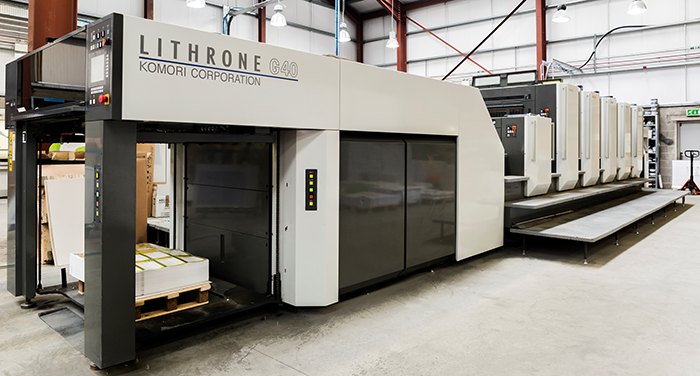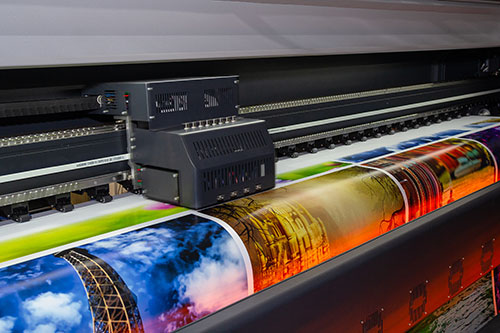The Crucial Guide to Comprehending Litho Printing and Its Applications
Litho printing stands as a substantial method in the printing market, rooted in the concepts of oil and water repulsion. This strategy not just delivers premium photos however also satisfies numerous industrial requirements. Its applications range from advertising and marketing materials to product packaging, showcasing its adaptability. As the industry adapts to new modern technologies, the evolution of litho printing questions regarding its future and importance in a digital landscape. What lies ahead for this enduring method?

What Is Litho Printing?
Litho printing, a commonly made use of printing method, depends on the principle of oil and water repulsion. This approach utilizes a flat printing surface, normally a metal plate, which is treated to guarantee that the image areas are receptive to oil-based inks while the non-image areas repel them. The procedure starts with the production of an image on the plate, typically with drawing or photo methods. When the picture is prepared, the plate is dampened with water, adhered to by the application of ink. The ink adheres only to the photo locations, enabling for accurate reproduction of graphics and message. Litho printing is preferred for its capability to produce premium prints with fine information and vivid colors. It is commonly made use of in industrial applications, including papers, publications, and product packaging, showcasing its adaptability and effectiveness in fulfilling the needs of modern-day printing.
The Background of Lithography
Although lithography is a modern-day printing staple, its beginnings trace back to the late 18th century when German playwright Alois Senefelder created the strategy in 1796. Originally developed as an approach for replicating texts and pictures, lithography utilized a flat rock surface to develop prints through a chemical procedure. Senefelder's technology permitted higher flexibility and creative expression contrasted to previous printing methods.By the 19th century, lithography gained extensive approval, becoming a prominent selection among artists and authors. It enabled the mass production of images, maps, and posters, notably affecting the printing sector. The strategy further evolved with the introduction of lithographic presses, enhancing performance and quality.As the industrial revolution advanced, lithography adjusted to meet the demands of industrial printing, leading the way for modern applications. Today, it stays an essential technique in different markets, consisting of posting, product packaging, and fine art reproduction.
Exactly How Litho Printing Functions
A vital attribute of litho printing is its dependence on the concept of oil and water repulsion - litho printing. In this process, images are transferred from a flat surface, usually a steel or polymer plate, to paper. Home plate is dealt with to make sure that the locations meant for printing bring in ink, while the non-image areas repel it because of their fondness for water. The printing begins by wetting home plate with water, which abides by the non-image areas. Ultimately, an oil-based ink is used, sticking just to the designated picture areas.When the plate comes into contact with the substrate, the ink is transferred, creating a print. The litho printing process is capable of producing top quality images with fine information. It is often made use of for automation as a result of its effectiveness and uniformity, making it a recommended approach for industrial printing applications
Advantages of Litho Printing
One remarkable benefit of litho printing is its ability to generate premium photos consistently, making it a perfect selection for commercial tasks. This printing method makes use of a flat printing plate, ensuring also ink distribution and sharp details. Litho printing is likewise renowned for its color accuracy, enabling lively and true-to-life reproductions, which is necessary for branding materials.Moreover, it supports a variety of substrates, consisting of paper, cardboard, and even particular plastics, enhancing its adaptability. The process is economical for huge runs, as economic climates of range reduce per-unit expenses. Additionally, litho printing has a quick turnaround time, permitting efficient production schedules.Its durability likewise suggests that printed materials withstand fading, making certain that the end product keeps its visual charm gradually. Overall, these advantages make litho publishing a recommended choice across various markets, adding to its long-lasting appeal.
Applications of Litho Printing in Business
As services significantly look for dependable and top notch printing remedies, litho printing arises as a crucial gamer in numerous applications. This technique is particularly favored for producing advertising materials such as pamphlets, flyers, and directories, many thanks to its capacity to deliver vibrant colors and sharp images. On top of that, litho printing is frequently employed for packaging solutions, allowing companies to create distinctive tags and boxes that boost item appeal.In the market of business identification, litho printing contributes in creating expert stationery, company cards, and promotional merchandise, which assist strengthen brand acknowledgment. In addition, it is extensively utilized in the publishing industry for published products such as books and magazines, where regular top quality is critical. In general, litho printing's versatility and performance make it an essential device for services aiming to connect successfully and develop a solid market presence.
Artistic Utilizes of Litho Printing
Litho printing works as a versatile tool in the domain of printmaking, offering musicians a special method to share their imagination. This technique permits a variety of imaginative applications, from conventional prints to modern interpretations. By discovering the nuances of litho printing, musicians can harness its unique top qualities to improve their work.

Printmaking Strategies Summary
The virtuosity of printmaking encompasses a varied array of techniques, with litho printing attracting attention for its distinct method to photo creation. This technique depends on the concept of oil and water repulsion, allowing musicians to draw straight onto a sedimentary rock or metal plate with an oily tool. Once prepared, the plate is dampened and tattooed, moving the image onto paper with stress. Litho printing is commemorated for its ability to produce fine details and rich tonal variations, making it a popular choice among artists. Furthermore, the procedure is functional, suiting both conventional methods and modern-day adjustments. This versatility allows litho printing to bridge different creative designs, improving the printmaking landscape with its distinct characteristics and capabilities.
Special Artistic Applications
Exploring the distinct imaginative applications of litho printing reveals its amazing versatility in various creative fields. Musicians make use of litho printing to develop detailed layouts and appearances, enabling meaningful and thorough jobs. The procedure assists in the recreation of brilliant colors, making it optimal for pictures and fine art prints. Many modern musicians welcome lithography for its capacity to incorporate conventional techniques with modern-day principles, leading check out this site to ingenious artwork. In addition, litho printing is usually used in the manufacturing of restricted edition prints, boosting their value and appeal. The responsive top quality of litho prints adds a distinct measurement, drawing in enthusiasts and art lovers alike. Generally, litho printing remains a substantial medium for artistic expression, linking traditional methods with modern imagination.
The Future of Litho Printing in a Digital Globe
As the printing market develops, litho printing encounters the obstacle of integrating digital technologies to remain appropriate. Approaches focused on digital assimilation, alongside fads in sustainability and technology, will certainly shape its future - litho printing. Understanding these dynamics is essential for market stakeholders looking to adjust to a swiftly altering landscape
Digital Assimilation Techniques
An expanding variety of litho printing companies are right here welcoming electronic assimilation methods to stay competitive in a significantly digital landscape. By integrating electronic workflows, these business can simplify processes and improve performance. This integration enables for real-time information monitoring and improved communication in between divisions, lowering turnaround times noticeably. In addition, digital tools allow far better customization and personalization of printed products, accommodating details customer needs. Firms are also adopting crossbreed printing solutions that combine conventional litho methods with electronic modern technologies, supplying flexibility in manufacturing. Leveraging data analytics helps in understanding market trends and customer preferences, allowing businesses to make informed decisions. Overall, electronic assimilation is coming to be crucial for litho printing firms aiming to innovate and react to advancing market demands.
Sustainability and Advancement Patterns

Frequently Asked Concerns
What Products Are Frequently Made Use Of in Litho Printing?
The materials typically made use of in litho printing include aluminum plates, ink, water, and paper. Each part plays a necessary duty in the printing process, making sure high-quality picture recreation and reliable transfer of ink onto the substrate.
Exactly How Does Litho Printing Contrast to Digital Printing?
Litho printing supplies superior color consistency and top quality for huge runs, while digital printing excels in short runs and personalization. Each More Help approach has distinct benefits, satisfying different requirements based upon manufacturing range and cost-efficiency.
What Is the Regular Turnaround Time for Litho Printing Projects?
The typical turnaround time for litho printing projects varies, normally varying from a couple of days to a number of weeks. Factors affecting this duration consist of task intricacy, amount, and called for finishing processes, affecting total manufacturing timetables.
Can Litho Printing Accommodate Personalized Sizes and Formats?
Litho printing can indeed accommodate custom sizes and formats, enabling flexibility in design. This flexibility makes it possible for customers to attain one-of-a-kind print end results customized to their certain requirements, improving the overall effectiveness of their projects.
What Are the Ecological Influences of Litho Printing?
The ecological effects of litho printing include source usage, chemical usage, and waste generation. Innovations in lasting practices and eco-friendly products are gradually reducing these adverse impacts, advertising a much more environmentally liable technique to printing.